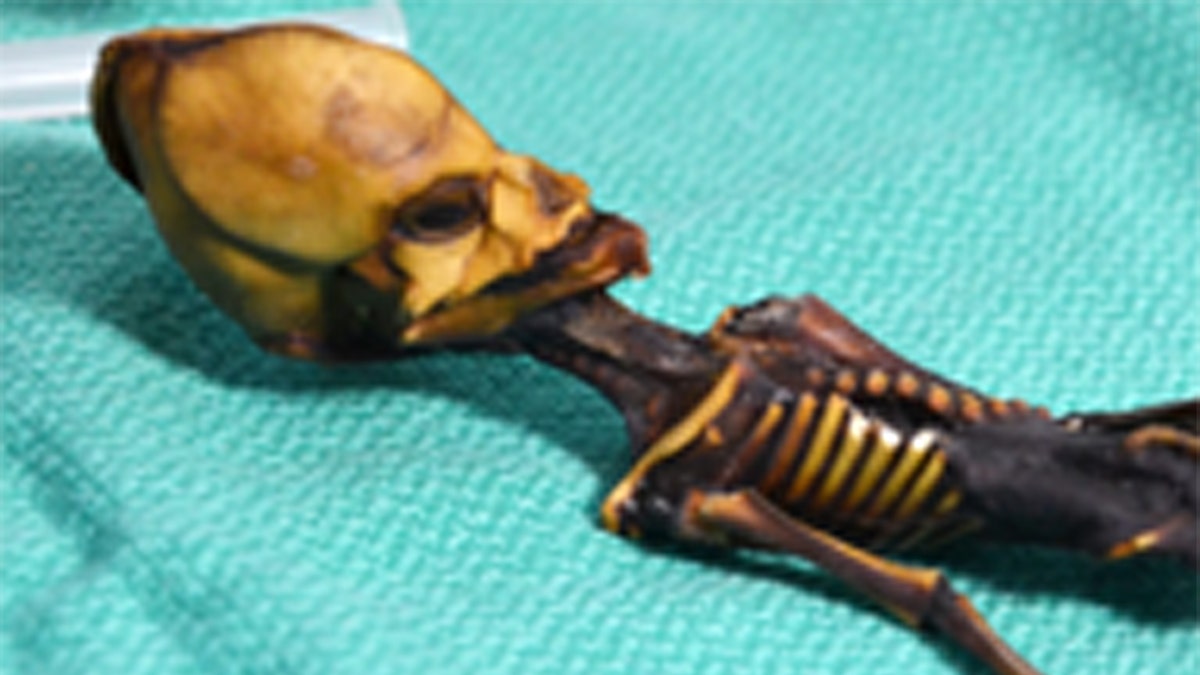
A mummified specimen from Chile's Atacama region prompted speculation for a decade about the find's peculiar skull. Credit: Dr. Steven Greer/SiriusDisclosure.com
The severely elongated head of a preserved skeleton found in Peru's Atacama Desert in 2003 is so unusual that it initially prompted people to suggest that the diminutive body was that of an extraterrestrial.
Since then, DNA testing confirmed that the remains — which measure about 6 inches (15 centimeters) long — belonged to a human fetus that researchers named Ata. But the scientists who conducted that investigation and published their findings in March have recently come under fire for their methods.
Yesterday (July 18), another group of researchers presented an evaluation of the earlier study, publishing an analysis in the International Journal of Paleopathology. They criticized the prior research, suggesting that its conclusions about the skeleton's so-called abnormalities — such as missing ribs — reflected an incomplete understanding of normal fetal development. That mistaken interpretation of the remains led the scientists to proceed with DNA extraction that damaged part of the skeleton. Their investigation, which did not include any Chilean researchers, may have sidestepped protocols that typically monitor the ethics of research conducted with human remains, as their publication omitted "a sufficient ethics statement or archaeological permit," Kristina Killgrove, co-author of the new study and an assistant professor of anthropology at the University of West Florida, wrote in an article for Forbes.
In the new paper, the authors pointed out that the mummy's unusual-looking skull and body were not necessarily the result of "anomalies," as the previous research suggested. Rather, the skull could have been elongated by vaginal delivery of the preterm fetus, while heat and pressure underground after the body was buried could have further compressed the cranium, the scientists reported. [Image Gallery: Odd Alien-Looking Skeleton Poses Medical Mystery]
The authors of the new analysis also questioned the earlier research's suggestion that "novel mutations" could explain the mummy's size. The authors noted that skeletal development at the fetus' suspected age, 15 weeks, would not have been affected by the genetic variants that the researchers described in the previous study.
Because the remains are thought to be just a few decades old, studying them raises ethical concerns that the March study did not adequately address, the scientists in the new study said. Furthermore, as DNA extraction can destroy some of the body's tissues, additional restrictions typically apply for such an examination. And it is unclear from the prior study that DNA sampling was required to begin with, the researchers said.
"Unfortunately, there was no scientific rationale to undertake genomic analyses of Ata, because the skeleton is normal," the authors wrote in the new study, adding that the whole-genome testing previously performed "was unnecessary and unethical."
"We caution DNA researchers about getting involved in cases that lack clear context and legality, or where the remains have resided in private collections," the study authors concluded.
Original article on Live Science.




















